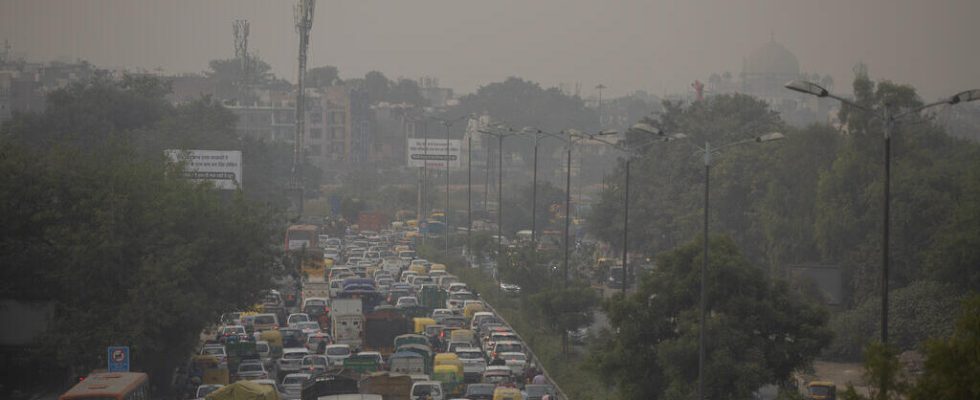Air pollution poses a greater risk to global health than smoking or alcohol consumption, and this danger is exacerbated in certain regions of the world such as Asia and Africa, details a study published on Tuesday, August 29.
3 mins
According to this report by the University of Chicago’s Energy Policy Institute (EPIC) on global air quality, fine particulate pollution – emitted by motor vehicles, industry and fires – accounts for “ the greatest external threat to public health » world.
But despite this observation, the funds allocated to the fight against air pollution represent only a tiny fraction of those, for example, dedicated to infectious diseases, points out the report. Fine particle pollution increases the risk of developing lung disease, heart disease, stroke or cancer.
Permanent compliance with the fine particle exposure threshold set by the WHO would increase global life expectancy by 2.3 years, estimates the EPIC, based on data collected in 2021. In comparison, the Tobacco consumption reduces global life expectancy by an average of 2.2 years, and child and maternal malnutrition by 1.6 years.
China, has made progress in its fight against pollution
In South Asia, the region of the world most affected by air pollution, the effects on public health are very pronounced. According to EPIC models, the inhabitants of Bangladesh could gain 6.8 years of life expectancy if the pollution threshold were lowered to the level recommended by the WHO. India’s capital, New Delhi, is considered the “most polluted megalopolis in the world”.
Conversely, China has made remarkable progress in its fight against air pollution “Initiated in 2014, underlines with AFP Christa Hasenkopf, director of the programs on the quality of the air of the EPIC. The average air pollution in the country has thus decreased by 42.3% between 2013 and 2021, but remains six times higher than the threshold recommended by the WHO. If this progress continues over time, the Chinese population should gain an average of 2.2 years of life expectancy.
But overall, the regions of the world most exposed to air pollution are those that receive the least means to combat this risk, the report notes. “There is a deep gap between the places where the air is most polluted and those where the most resources are collectively and globally deployed to solve this problem”, explains Christa Hasenkopf.
Read alsoAir pollution cuts life expectancy for all humans by two years
Megafires in Canada and the United States increase pollution
In the United States, the federal Clean Air Act program has helped reduce air pollution by 64.9% since 1970, allowing the average life expectancy of Americans to increase by 1.4 years. In Europe, the improvement in air quality over the past decades has followed the dynamics of that observed in the United States, but deep disparities persist between the east and the west of the continent.
All these efforts are threatened, among other things, by the multiplication of forest fires around the world – caused by the increase in temperatures and the multiplication of episodes of drought, linked to climate change – and which cause peaks in air pollution.
In 2021, the historic fire season in California, for example, resulted in air pollution in the Californian county of Plumas of the order of five times the threshold limit recommended by the WHO. Megafires which ravaged Canada in the summer of 2023 caused pollution peaks in Quebec and Ontario, and in several regions of the eastern United States.
(With AFP)
Africa, a continent on the front line on air pollution
Pollution particularly affects the African continent. But few investments make it possible to fight effectively. Among the 30 most polluted countries in the world, eight are in Africa, in the center and west of the continent… Burundi, Nigeria, Rwanda are among these states. The health consequences are significant.
In the Democratic Republic of Congo or Cameroon, air pollution can cause a loss of up to three years of life expectancy, more than for HIV, malaria or tuberculosis. However, contrary to the international measures to fight against these diseases, there is no international plan to fight against pollution.
Dedicated investments are derisory: only $300,000 notes the report. Against 4 billion for the fight against HIV. In the United States, Canada and Europe, 32 billion dollars are invested in the fight against pollution… Even though these are places where the air is the least polluted in the world.
